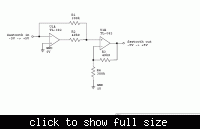Ashish.chip
Newbie level 6
frequency doubler circuit
I want a frequency doubler circuit so that i can double frequency of a given Square wave input.I want to solve this problem only in analog.so plzz suggest me a circuit for this....
thanks a lot!!!
I want a frequency doubler circuit so that i can double frequency of a given Square wave input.I want to solve this problem only in analog.so plzz suggest me a circuit for this....
thanks a lot!!!
